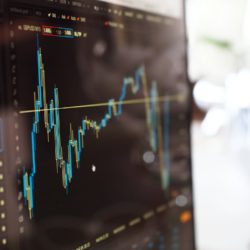Exchange Traded Funds have been around for decades; however, the more recent development of Factor ETFs is quickly gaining popularity among investors. This post will explore the mechanics of Factor ETFs as well as the benefits of such funds.
What are ETFs?
In general, Exchange Traded Funds are securities that are constructed to imitate or track the way a specific index or collection of diverse securities behave. These securities, which represent one share (claim) of the fund, can be bought and sold on a market (e.g. NYSE). Factor ETFs maintain these same qualities giving investors the ability to diversify over a broad market sector with a single investment except these funds incorporate various characteristics of stocks that drive risk and return.
Brief History and Components of Factor ETFs
In the 1960s, financiers conceived the idea of beta and demonstrated that a particular stock or portfolio is sensitive (and driven by) movements in the overall market. 30 years later, research emerged showing that other “factors” also drove stock performance. Factor ETFs are portfolios that include some or all of the following key characteristics:
- Value–a focus on inexpensive or potentially underpriced stocks
- Momentum–a focus on stocks with strong recent performance
- Quality–a focus on companies with stronger operational earnings & balance sheets
- Volatility–a focus on the portfolio’s diversified construct, obtaining a lower volatility
- Size–a focus on a category of market capitalization
Some Factor ETFs may focus or “tilt” on one factor, while others may encapsulate many.
Is this Passive or Active Investing?
In short, Factor ETFs are both.
While they are technically actively managed through adjusting the factors’ weighting in the fund, they are passively monitored through a systematic process using rule-based exposure. Essentially, fund managers set criteria to follow and invest accordingly. Those in favor of systematic (or passive) investing generally oppose faith-based (or active) investing. On one side, systematic investing includes a number of transparent rule-based processes to provide market exposure. Alternatively, faith-based investing does not require transparency; instead, it requires trust in an active manager to provide superior returns through an unknown strategy. Although both types of investing are popular, there are differing benefits to be realized.
What are the Benefits of Factor ETFs?
- Greater Transparency
As mentioned above, Factor ETFs demand a predetermined strategy—in-tune with an investor’s preferences—before money is invested. This enables an investor to have a clear sense of how his or her money is positioned in the market. With this transparency, an investor is equipped with greater confidence when considering performance relative to peers who seek active management of funds.
- Targeted Exposure to a Desired Factor
Factor ETFs enable an investor to choose which characteristic(s) of a stock will provide the greatest return. Using a lasting, logical rationale, investors may choose to “tilt” towards one or few characteristics that appear most promising. An individual may achieve reduced risks with heightened returns when his or her risk-level and fund volatility are determined. For an investor that does not specifically weigh one characteristic over another, a fund that blends several factors together such as the JPMorgan Diversified Return International Equity ETF (JPIN) may suit him or her best.
- Cost Savings
In general, active management accumulates high investing fees, yet a more passive strategy like investing in a Factor ETF can reduce costs substantially. Using automated algorithms, managers can follow investment rules predetermined by the investor at a low cost. Ideally, the manager will not need to spend as much time or money monitoring funds in a Factor ETF when compared to a manager actively overseeing a portfolio on a day-to-day basis. Firms like JP Morgan Chase that construct their own Factor ETFs have fees of .45% to 1%. Ultimately, Factor ETFs offer a multitude of benefits for an investor; the cost savings are instantly noticeable and will push a portfolio to greater prosperity.
M3’s Stance on Factor ETFs
At M3 Wealth Advisors we believe in setting your goals, and meeting them in the long run with minimal interference, worry, or fees. We pride ourselves as fiduciaries; we want our clients to invest in the market at the level of risk that is right for them, and to implement this market allocation at the lowest cost possible. Fees matter. In order to realize impressive returns, fees must be at a minimum. At M3 Wealth Advisors we foster this relationship and will tailor your investment portfolio to your tolerance for risk, and timeframe for goals.
If a client wants pure asset allocation to drive the process, we can do that. If a client wants to be passive and believe that active management cannot be consistently profitable, then we can do that. If you want to have a level of control in your portfolio such as minimum volatility, momentum, or growth, then we can add that active tilt to an index portfolio. They key is M3 combines the best of both worlds at the lowest cost available.
Haven’t thought about setting your financial goals or where to start? No worries, check out our free quiz here to take the first step:
